Winter squash recipes are on my table 2 to 3 nights a week during the fall and winter seasons. Winter squash is one of my absolute favorite vegetables! They are hearty and filling, the perfect cold-weather food. There are many different ways to prepare it, some more elaborate and fancy than others, but it doesn’t have to be difficult. I think bringing winter squash out of the “special occasion” category and into the regular night dinner category is totally doable. Let me show you my favorite easy winter squash recipes!
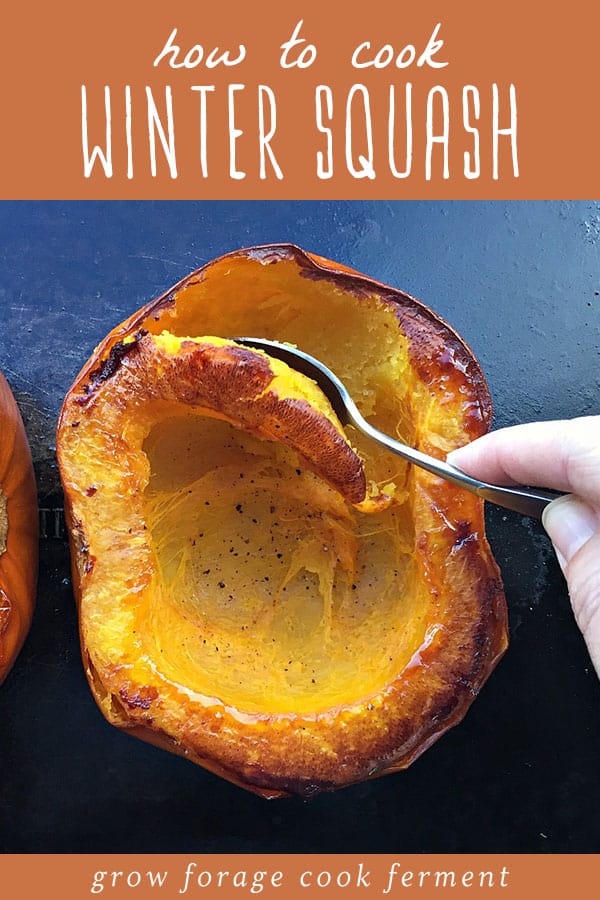
Want to save this post for later?
Types of Winter Squash
There are many types of winter squash, but a few are more common than others.
The ones you are most likely to see in the grocery store or farmers market are butternut, acorn, delicata, spaghetti, and small sugar pumpkins.
Some of the less common, but still totally delicious varieties are kabocha, hubbard, red kuri, honey nut, and buttercup.
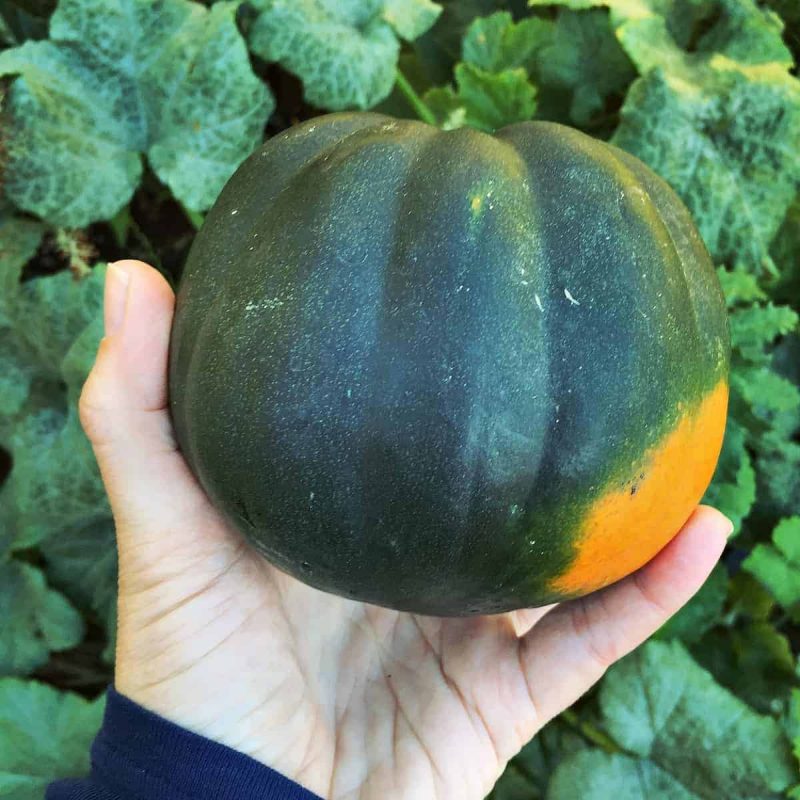
How to Cook Winter Squash
The main thing to consider with any of these cooking methods is that they do take a bit of time because winter squash are all large and dense vegetables.
That shouldn’t stop you from making winter squash recipes though, because most of the cooking time is hands-off. Just be aware of that and get them going early.
Roasting Squash Pieces
This is generally what I will do with butternut squash and sugar pumpkin, as they are the easiest to peel and cut up into cubes or slices.
The best way to do this is to cut the butternut crosswise (not lengthwise), then peel off the skin with a paring knife. Cut the bulbous end in half and scrape out the guts and seeds, then cut up the squash in whatever shapes you like.
Toss the pieces with some oil, olive or coconut work well, salt and pepper, and any herbs that you like (rosemary or sage work well).
Spread in a single layer on a sheet pan, and cook at 400°F for 30-40 minutes, flipping or stirring halfway through.
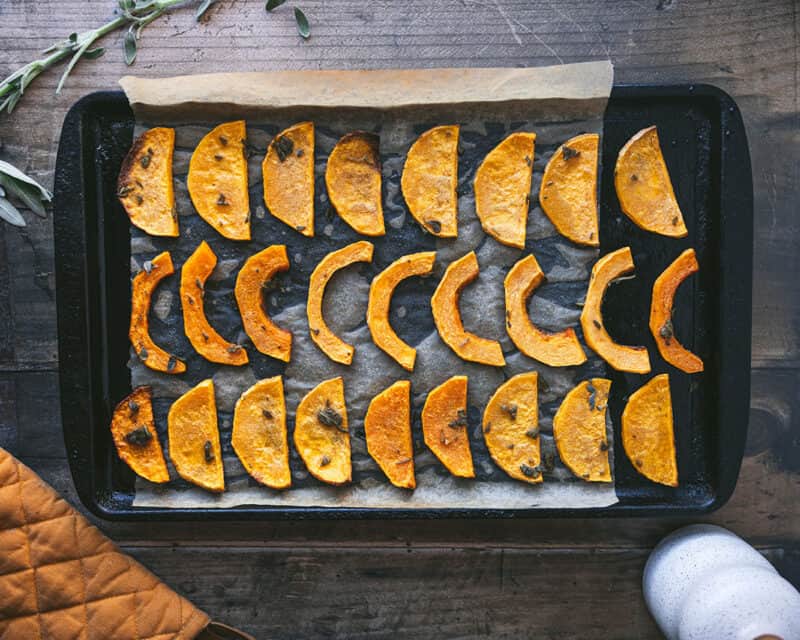
You can also roast pieces of delicata or acorn squash, without peeling the skin off first, as they are too bumpy to mess with.
Some people even like to eat the skin of delicata squash as it’s quite thin, or you can just leave the skin on your plate. It certainly makes for a beautiful presentation!
Roasting Squash Whole and Stuffing
Most varieties of winter squash are good for stuffing, as they are hollow in the center. My favorite varieties to use are acorn or delicata, as they are small enough that one stuffed half can usually be a single serving.
First, you will want to cut the squash in half, trim the ends, and scoop out the seeds. Coat the flesh with a bit of oil and salt and pepper, then put the cut side down on a sheet pan.
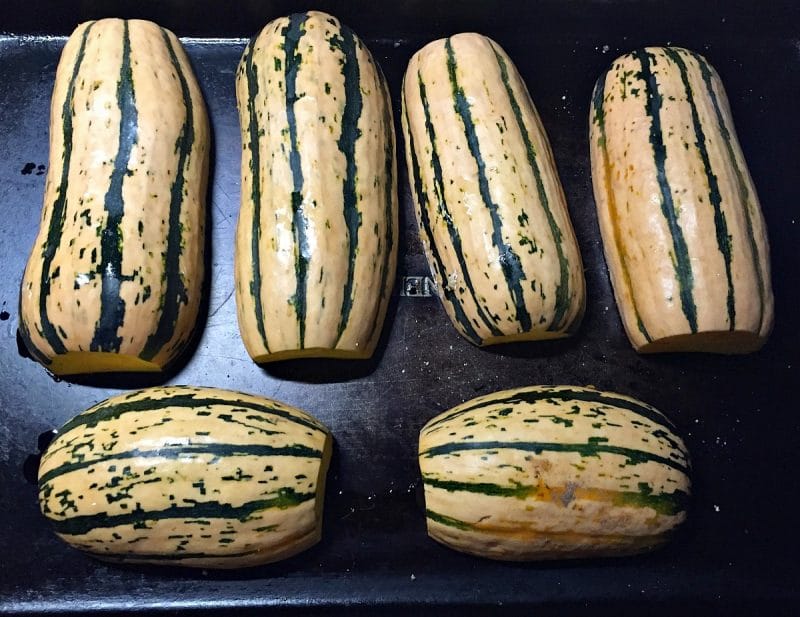
Roast at 400°F for 40-60 minutes, depending on the size of your squash. When you can easily pierce the squash with a knife and the cut side is starting to turn brown and caramelize, the squash is done.
This is the same method you will use whenever you want to roast a whole squash, regardless of the variety.
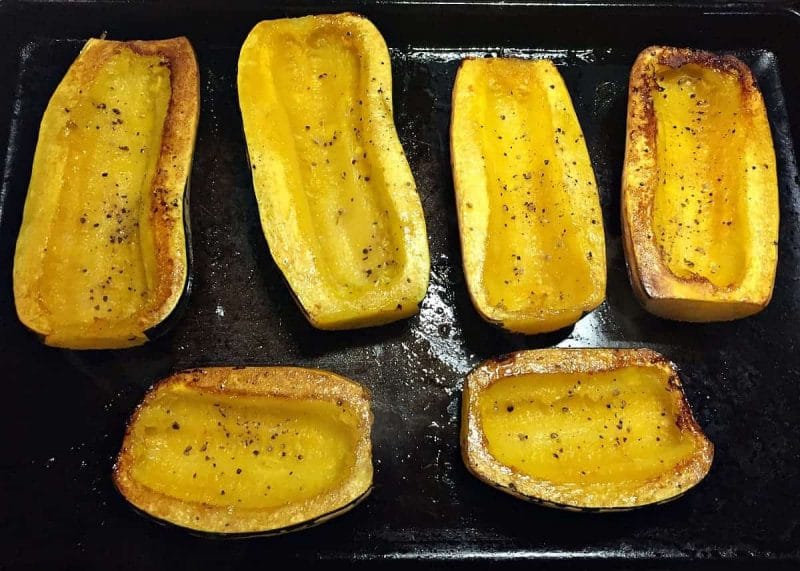
Then stuff the squash with whatever your heart desires. I like to do cooked ground beef or pork mixed with sauteed veggies.
You can also keep it vegetarian and stuff it with quinoa or rice and lentils. Really anything will work here, and it’s always a good idea to top it with cheese and put it under the broiler for a minute or two.
Make Squash “Spaghetti”
This is one of my favorites of all winter squash recipes. Making spaghetti out of squash is easiest with spaghetti squash, hence the name!
Use the same method for roasting a whole squash that I describe above.
When it’s done and cooled slightly, use a fork to get out the “spaghetti” strands. They will come out easily.
Sometimes I’ll saute them with a little butter and sage and serve it as a side dish, but you can also top it with your favorite spaghetti sauce or pesto and eat it like noodles!
See my recipes for dandelion pesto and chickweed pesto if you like the foraged varieties to top your squash with!
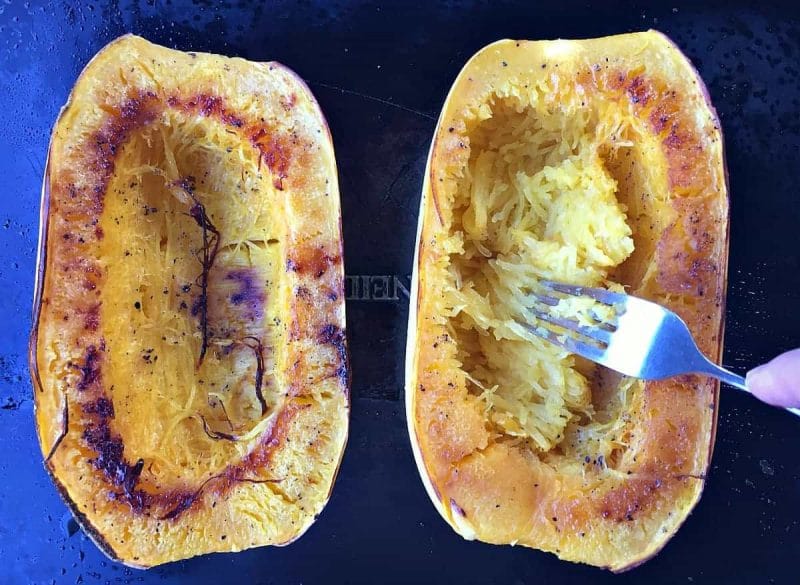
Besides spaghetti squash, you can also make your own noodles from butternut squash (or even zucchini) using a julienne peeler or spiralizer.
This takes a bit more effort than just using spaghetti squash, but is fun for a special dinner!
Mashed or Pureed Squash
Mashed squash makes a lovely side dish, and is very similar to mashed sweet potatoes.
You can use any variety of squash (besides spaghetti), just roast whole using the method I describe above. Then scoop out the flesh and mash with a potato masher.
You can make them savory, or on the sweet side like this delicious mashed butternut squash with maple syrup.
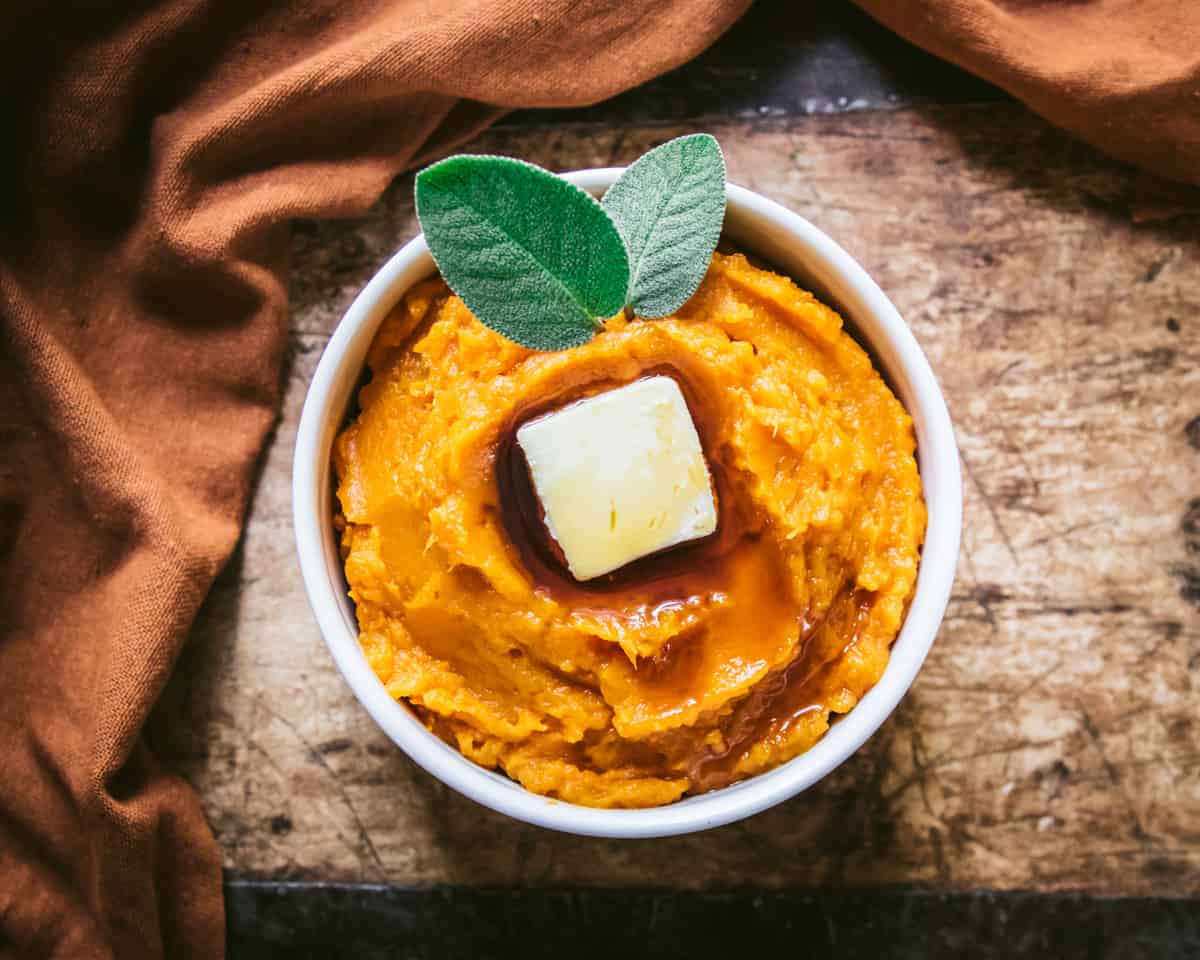
Pureed squash is taking mashed squash to the next level by pureeing it in a blender or food processor. It is usually kept plain and used for desserts like winter squash pie, winter squash cheesecake, or pumpkin cornbread.
Winter Squash Soup
Making winter squash soup is a very similar process to making mashed squash, but with the addition of more liquid.
Butternut, kabocha, hubbard, and acorn are all good varieties to use. I particularly like to make sugar pumpkin coconut soup or butternut squash and ginger soup whenever I get the opportunity!
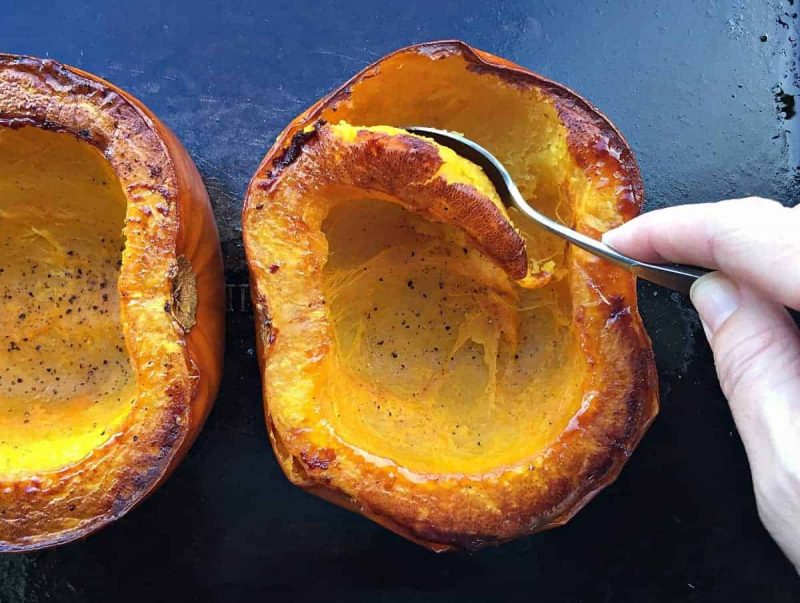
Here is my simple recipe:
Roast the whole squash using the method I describe above, then scoop out the flesh and put it into a pot.
Add a can of coconut milk and about a cup or so of chicken stock (you can adjust the amount of stock depending on how thick or thin you want your soup).
Then add some sauteed onions, garlic, ginger, herbs, and spices (I like to use curry and cumin) if you like, but it’s not completely necessary.
Once everything is heated through, puree using an immersion blender, or transfer everything to a regular blender (you may have to work in batches). I have to admit that the immersion blender has really changed my life!
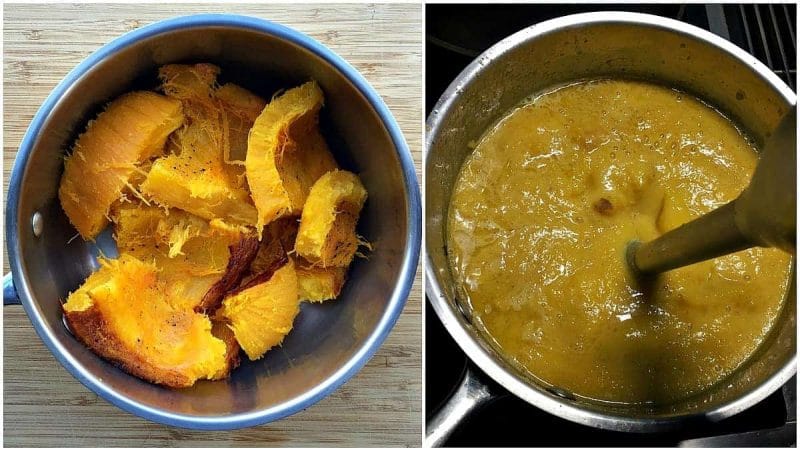
Continue to heat on low until ready to serve.
This makes such a delicious soup, and is surprisingly easy to make! It’s adaptable to different flavors, too, like if you’d rather use cream or milk instead of coconut milk.
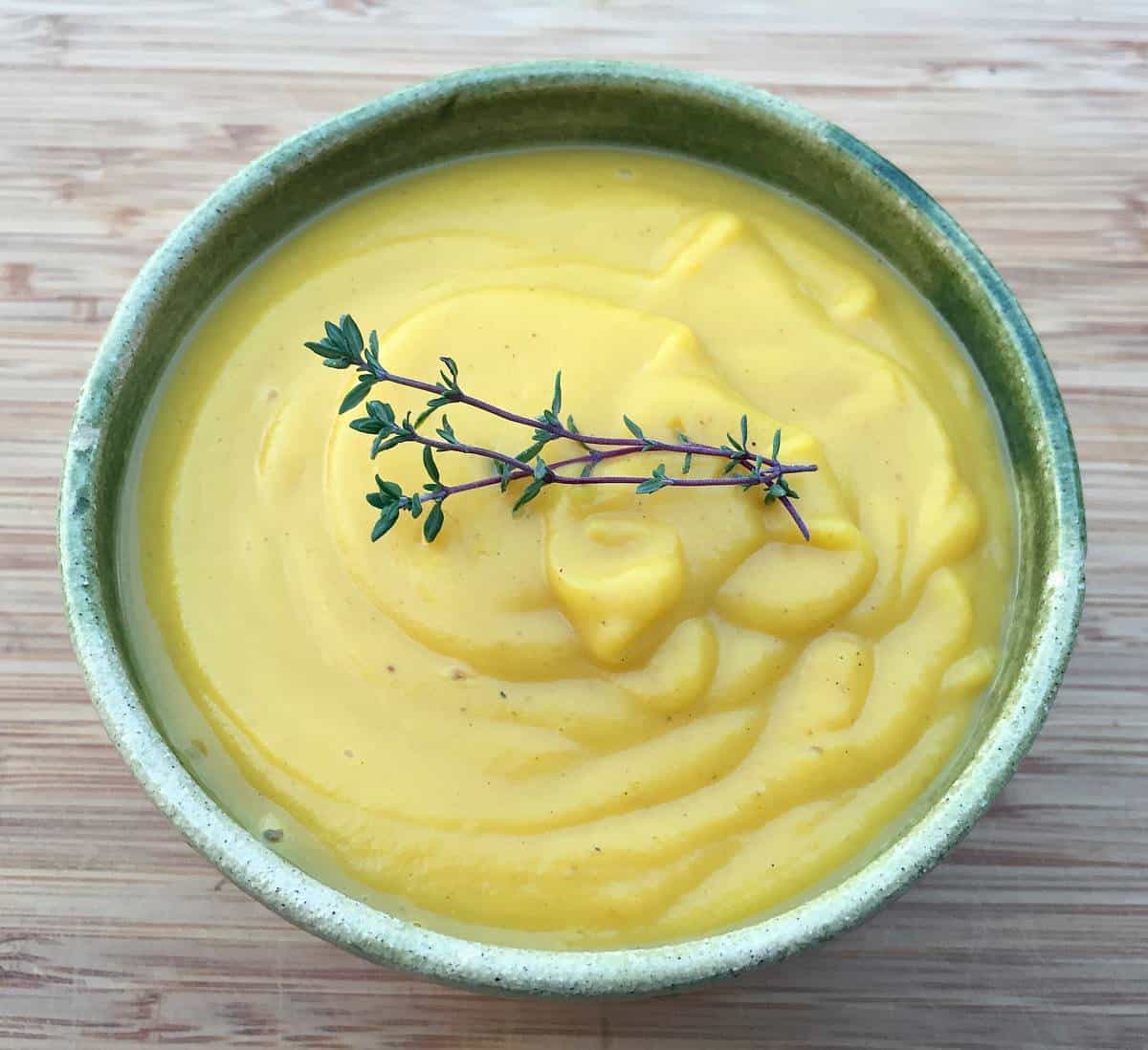
Preserving Winter Squash Recipes
Canning winter squash at home is generally a “no no.” Although canned pumpkin is popular in grocery stores, since pumpkin is a low-acid fruit it’s unsafe for water bath canning. Even with pressure canning, the puree is too thick for any home canning process to kill all of the bacteria.
Cubed winter squash or pumpkin can be pressure canned, however.
All that said, don’t let that stop you from making this super festive and delicious pumpkin butter with fresh pumpkin and maple syrup! The beauty of this butter goes further than its flavor – it’s easy to preserve by freezing.
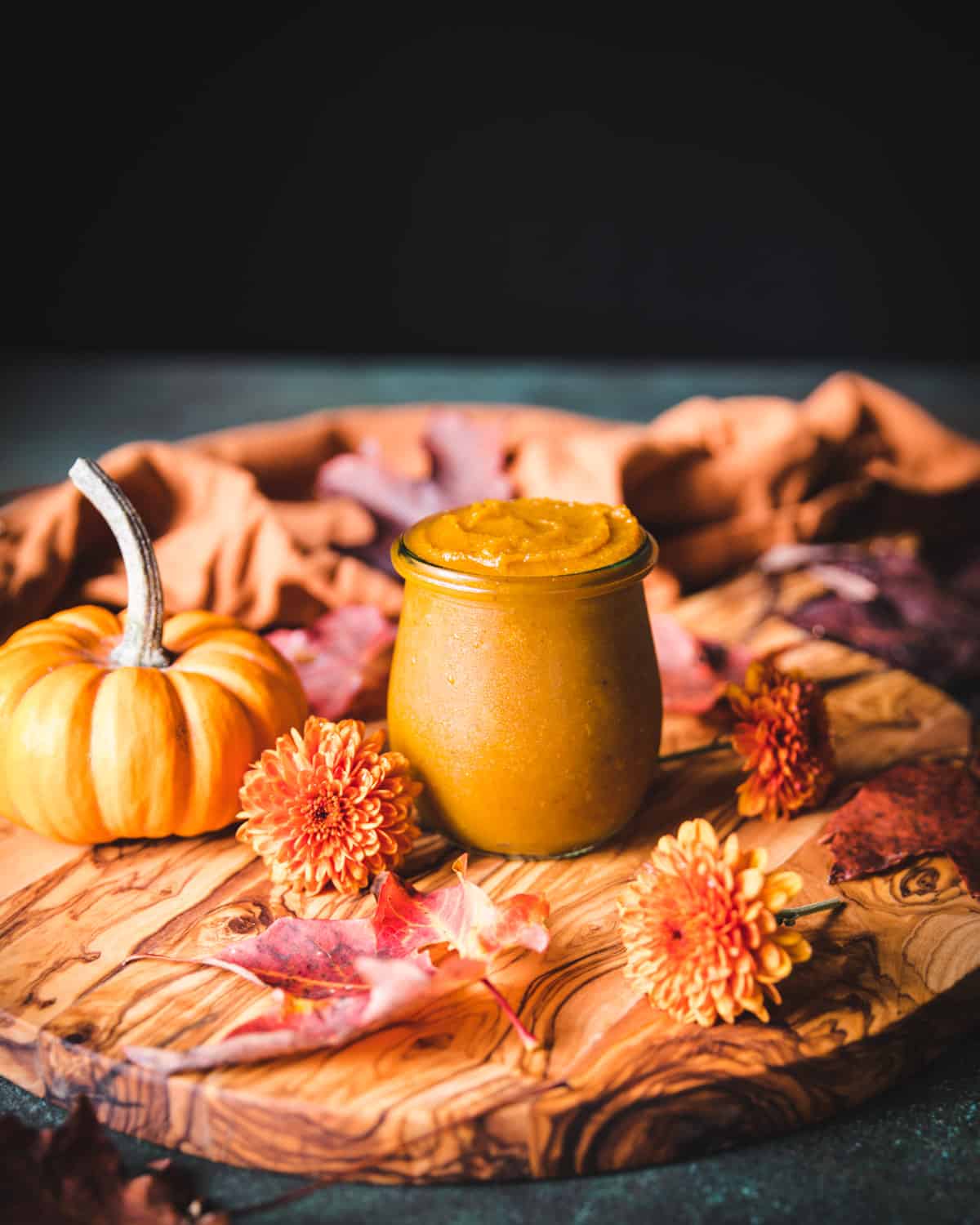
In fact, if you have extra pumpkin puree, freezing that is great too! I like to pre-measure it so I know exactly how much I’m taking out of the freezer at one time. Homemade pumpkin puree makes all of the difference in recipes, including my favorite no-bake pumpkin cups.
Another unique and super tasty way to preserve pumpkin is this healthy fermented pumpkin recipe. It’s great for that extra pumpkin you don’t know what to do with, and gives you a healthy probiotic boost too!
Lastly, dehydrating pumpkin is a great way to preserve pumpkin for long term storage and it doesn’t get any easier than dehydrator pumpkin roll-ups!
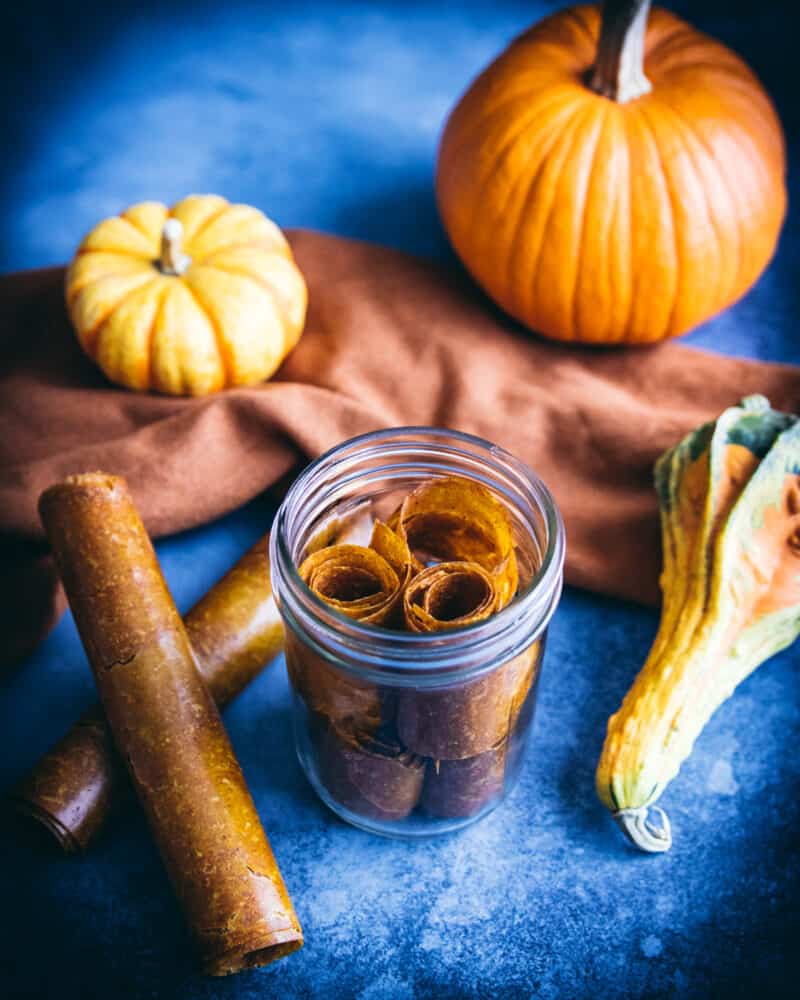
Does winter squash need to be peeled before cooking?
In most cases, it doesn’t. When roasting winter squash for recipes, it scoops easily right out of the peel once it’s tender enough to use.
If a recipe calls for peeling first, then the best way is usually to use an apple peeler when the squash is whole and uncooked.
What is the easiest way to cut winter squash?
Usually cutting off the stem side first, then the bottom side, and lastly in half is the best way to begin cutting a winter squash. Then scooping the seeds out should be easy!
Do you roast squash cut side up or down?
The best way is to have the cut side down and the skin side up, unless a specific recipe tells you otherwise.
What goes well with winter squash recipes?
If the winter squash is not a part of the main dish, it can go well with almost anything!
As a side to chicken or beef, roasted cubes in burritos or topped on ramen, or even made into “fries” by cutting the into spears as a healthy alternative to fresh fries. The versatility is endless!
Winter Squash-piration
These are my favorite easy winter squash recipes to cook! I hope I leave you with the inspiration to cook winter squash on a more regular basis at home. It’s such a lovely, tasty, and healthy vegetable to have around.
What is your favorite way to prepare winter squash? I’d love it if you shared your recipes with me in the comments!
Learn How to Cook Other Vegetables
Here are a few other not-so-usual vegetables you may need a little help learning to prepare in a way that makes you fall in love with them at the first bite!
- 8 Ways to Eat Radishes & Their Greens
- How to Cook Turnips & Their Greens
- How to Cook & Eat Artichokes
- How to Cook Jerusalem Artichokes
- How to Cook Burdock Root
- What to Do with Cabbage
- How to Cook Beets & Their Greens

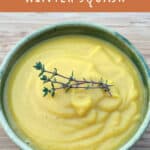
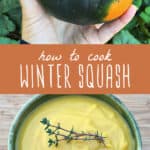

This is a great and very helpful article, Colleen. Winter squash time is definitely here. I would like to add one more quick way to cook winter squash. This should be done with medium to small squash. Not those huge ones and really not with butternut, either.
Wash and poke holes in the rind, just as you would a baked potato. Do not cut it open. Put the squash on an oven rack and bake for an hour or so at 375 to 400 degrees. Check for doneness with a fork. Remove and let set a bit to cool. Then cut it open and scoop out the guts while hot. Maybe you should wear oven mitts for this. Now add a pat of butter or anything else you like on winter squash and enjoy.
Hi Colleen, Do you have any recommendations for cutting and cooking the infamous Hubbard squash?? It’s SO big.
Hi Nancy. I’ve honestly never cut open a Hubbard squash myself, but after a quick search on YouTube, it seems like there are several ways to go about doing it.
What is the best way to cut the squash in half for roasting? I just started doing this with a delicata I got from our CSA, and I feel like I need a chainsaw!
A big sharp knife! Putting the squash on a towel helps to keep it from slipping and folded up towel between your hand and the knife is also helpful.
The electric pressure cookers (such as the Instant Pot) are a great way to cook squash. I have a Butternut Squash, Bacon and Apple Soup recipe that I converted to the IP, and the squash will cook in less than 20 minutes, depending on how large the squash is. Just lop off each end, slice in half lengthways and scoop out the seeds.
Hi Colleen, you guys look so happy on the about link. What a neat site and great squash story. Basic Squash Recipe. For reference I am commenting on the squash picture with the spoon and blue background. 1.) Wash and cut in 1/2 and remove seeds, etc. 2.) Place belly up, skin down in a ceramic dish with glass lid. 3.) For sauce use B. sugar and/or honey and top off with good size chunk of Organic Valley butter. Add water to dish at least 1 inch, add more water later if required. 4.) Put in oven set at 400F. Set timer for 1 hour. 5.) Turn down oven to 250F and continue heating the squash. 6.) When skin has separated from the squash meat (refer to photo) the squash is ready. 7.) Place squash on the plate so skin is up, being careful to not spill the sauce. Most often the skin will peel off with only a little help. If the squash looks like the skin is “stuck” use a spoon to carefully separate from the meat without damaging the squash meat. Then flip on to plate.The presentation on the plate looks great if you are careful. I also cook large baker potatoes at the same time, or if potatoes are smaller put in oven 30-45 minutes after starting the squash. Respectfully, Tom.
Maple syrup works good instead of brown sugar and taste really good
The roasted squash looks so good…makes me want to cook mine now!